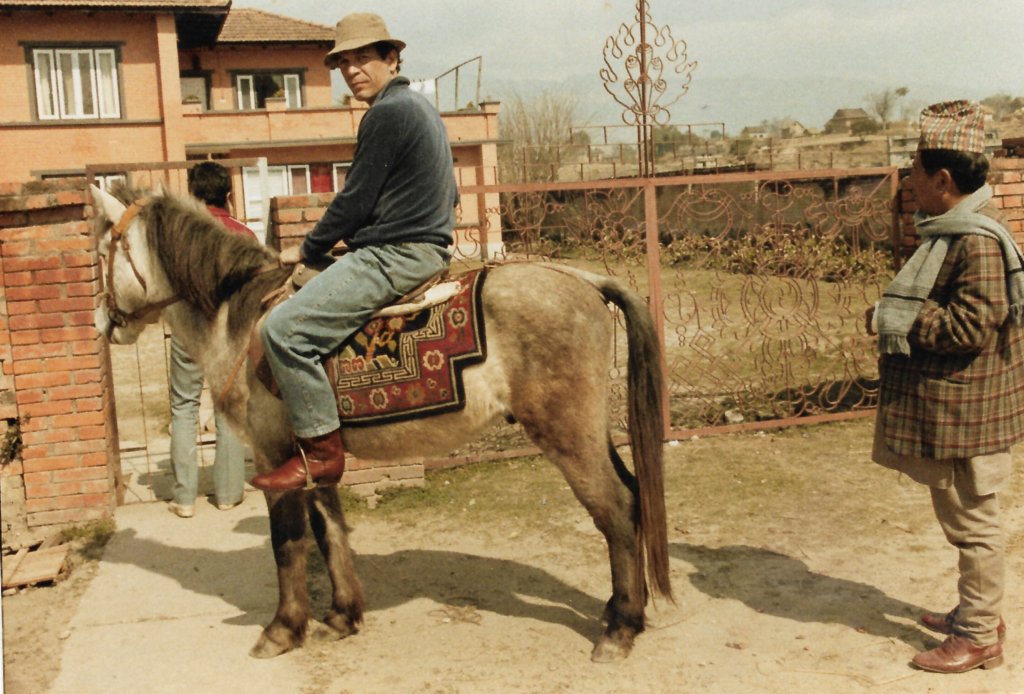Esoteric Project
Cannabis Landrace Preservation
We’re thrilled to unveil “The Esoteric Project,” a landmark collaboration between Seed is Art and cannabis luminary Joe Pietri. Joe’s seed vault is a living archive of cannabis history, featuring an array of landrace strains, many of which predate the 1970s. This partnership is designed to protect these invaluable genetics, combining Seed is Art’s dual focus on scientific and artistic cannabis breeding with Joe’s extensive experience in strain collection and preservation.
But “The Esoteric Project” is about more than just safeguarding the past; it’s a blueprint for the future of cannabis. Together, we aim to develop innovative strains that incorporate these age-old genetics, offering a unique fusion of traditional traits and contemporary benefits. Through this synergistic collaboration, we’re committed to elevating the cannabis experience, seamlessly integrating scientific precision with artistic flair to produce strains that are both therapeutically potent and culturally enriching.

-
 Wholesale – Tier 4$899.00
Wholesale – Tier 4$899.00 -
 Wholesale – Tier 1$2,999.00
Wholesale – Tier 1$2,999.00 -
 Wholesale – Tier 2$1,999.00
Wholesale – Tier 2$1,999.00 -
 Wholesale – Tier 3$999.00
Wholesale – Tier 3$999.00 -
 Durban OG$400.00
Durban OG$400.00 -
 Mazar-i-Sharif$400.00
Mazar-i-Sharif$400.00 -
 Blue Dragon$400.00
Blue Dragon$400.00 -
 Bara Bazar$400.00
Bara Bazar$400.00 -
 Blue Hunza$200.00
Blue Hunza$200.00
Part 1: Introduction to Landrace Genetics
What Are Landrace Strains?
Landrace strains are cannabis strains that have evolved naturally in specific geographic regions over extended periods. Unlike cultivated or hybrid strains, which are often the result of intentional breeding, landrace strains have developed in isolation. This isolation has allowed them to adapt uniquely to their local environments, making them genetically distinct and pure.
The term “landrace” itself is derived from agriculture and is used to describe domesticated plants and animals that have adapted to their environment without human intervention. In the context of cannabis, landrace strains are the “heirlooms” of the cannabis world, each carrying a unique set of genetic traits fine-tuned by natural selection.


Historical Significance
Landrace strains are often named after their regions of origin, such as Afghan Kush from Afghanistan or Durban Poison from South Africa. These strains have been used for centuries, if not millennia, serving various purposes ranging from medicinal to spiritual and recreational. They are deeply rooted in the history and culture of their native regions.
The historical significance of landrace strains extends beyond their names or places of origin. They are living archives that tell the story of human migration, trade, and the historical use of cannabis. Each strain carries a unique history, shaped by the people who cultivated it and the environment in which it grew.
Understanding the historical context of landrace strains provides a richer, more nuanced perspective on cannabis as a whole. It allows us to appreciate the plant not just for its current uses but also for its journey through time and its impact on various cultures.
Why Are Landrace Strains Important?
Landrace strains offer a treasure trove of genetic diversity. This diversity is crucial for breeders looking to develop new strains with specific characteristics. It’s also invaluable for scientific research into the medical applications of cannabis. Different strains have unique profiles of cannabinoids and terpenes, the compounds responsible for the plant’s therapeutic effects.
In addition to their genetic diversity, landrace strains are often more resilient than their hybrid counterparts. They have evolved to thrive in specific environmental conditions, making them resistant to local pests and diseases. This resilience can be a valuable trait for breeders looking to develop robust new strains.
But landrace strains are not just important for their genetic traits; they are also cultural artifacts. In many regions, these strains are integral to traditional practices and rituals. Preserving them is not just a matter of biological diversity but also of cultural heritage.


The Challenge Ahead
The increasing commercialization of cannabis poses a significant threat to landrace strains. As the industry grows, there’s a focus on strains that are high in THC or CBD, often at the expense of genetic diversity. This shift towards commercially viable strains threatens the survival of landrace strains, many of which do not fit these narrow criteria.
Moreover, habitat destruction and climate change further endanger these strains. Many landrace strains grow in regions that are experiencing rapid environmental changes, which could lead to their extinction. The loss of these strains would be a loss of genetic resources, cultural heritage, and potential medical treatments.
Therefore, the preservation of landrace strains is an urgent task that requires concerted efforts from breeders, researchers, and cannabis enthusiasts alike. As we delve deeper into this series, we will explore the specific steps being taken to preserve these invaluable strains and how you can contribute to this important mission.
